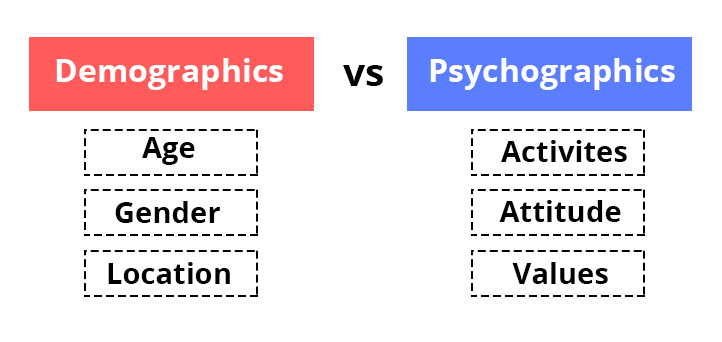You’re at an event and that question pops up. You know, the standard, “What do you do?” question at every party. If your reply is: “I work in the technology space developing software for entertainment purposes using the latest technology.”
Congratulations! You just told everyone you’re a robot wearing some poor human’s skin. Rather, you’d say something like: “I make video games. My current project is a game where you’re hiding from murder robots using VR.”
Way more interesting!
So why do we talk about our games in the most annoying, buzzword-riffic statements when trying to pitch them?
In this post, we’re going to cover the problem with indie pitches, avoiding the Problem with Unique and the Curse of Knowledge, and how to craft a pitch that triggers ACTION.
What 99% of Most Pitches Get Wrong

(source)
To make sure we’re on the same page, a pitch is a summary of your idea in a condensed form, which leads to a response.
In my inbox, I get pitches like this:
“[gamename] is an overhead dungeon crawling puzzle game MMO.”
“[gamename] is an on-track pixel-based rail shooter with RPG elements.”
“[gamename] is a procedurally generated time-based strategy game.”
Did any of them scream “PLAY ME NOW!”? Not really! In fact, using that method above can scare away potential buyers.
Let me explain why.
1) The Problem with Unique
First is the Problem with Unique. Genres are systems, and systems are not attractive by themselves.
In his article “The Problem with Unique,” Dorian said it best in that, “[a] unique mashup of genres can be a nice marketing point [but] the basics of good game design will always still apply.”
This example:
“[gamename] is an overhead dungeon crawling puzzle game MMO.”
… is not interesting by itself. Each piece leads to a question.
Is it a dungeon crawler like Wizardry or like Binding of Issac?
Is it a puzzle game like Tetris or like Angry Birds?
Is it an MMO like World of Warcraft or like Habbo Hotel?
You’ll leave people scratching their heads.
2) The Curse of Knowledge
Second is the Curse of Knowledge. Your pitch may be filled with buzzwords that makes sense to some and confuses everyone else.
The Curse of Knowledge is a cognitive bias that makes you assume the people you talk to have the same background as you do.
Here’s an example: In the arcade classic Pac-man, each ghost has different AI behaviors, such that you can force them in a particular place on the map. Once you memorize their behaviors, you can “group” them in a location, eat a big dot and devour all the ghosts at once. Even better, you can use a holding position (select spots on a maze) which triggers the AI to more likely form groups (I’m not a professional Pac-man player. I just did the research).

Toru Iwatani: Pac-man via Ryan Somma. (source)
Knowing this information . . . imagine yelling to a new Pac-man player: “Trigger orange ghost’s AI, then beeline to the top-right hold. Group them, eat them, and make a sprint to the remaining dots!”
The player will look at you like you’re crazy. Without teaching them how it works, you’re just speaking gibberish.
Avoiding the Problem with Unique and Curse of Knowledge
Pitches need to be tailored to the audience directly, based on their knowledge and understanding. You also need to adjust it based on the mechanism of delivery.
Here are the three common ways to pitch:
- When pitching it online (In an email, on your store page, on your website, etc.).
- When pitching it in verbally (Doing interviews, chatting with other developers at events).
- When pitching it to influencers (Press, YouTubers, streamers, other game developers).
Pitching it Online
When pitching online (In an email, on your store page, on your website, etc.), the goal is to get them to buy your game.
Even when you are targeting a broad audience, you still want to narrow your language. If it’s for everyone, then it’s for no one.
- Define the customer persona. What kind of person are they? Why would they be interested? Think beyond demographics and look into their psychographic.
- Your marketing message should fit their personality and values. It’ll be confusing if your store page says it’s a “unique puzzle experience” but your trailer is a 2-minute reveal about the history of your company.

Since creating a marketing message based on psychographics can be a challenge, here’s an example:
The ideal person you want to attract is one who wants a mobile game experience that isn’t a cash grab. So your pitch should focus on the incredibly deep content-rich game, the lack of ads, and how the in-game store isn’t obtrusive to the experience.
Pitching it Verbally
In a verbal pitch (doing interviews, chatting with other developers at events), the end goal is to get them to remember you. At the end of a conversation, typically say, “I can’t wait to see [your name here]’s game—what is it called again?”
- To be successful, start by closing the knowledge gap. Describing who Mario is to a developer is a waste of time, but you might talk about how Mario slides around when he runs. To a casual gamer, you might instead talk about how it feels to move on ice.
- Share the most relatable element of your game based on THEIR interest. If they love exploring but hate violence, talking about how you can travel to the top of a mountain will “peak” their interest. But if you focused on your original Unique Selling Point (USP)—that you can kill anything in your game—you might turn them off.
You’re more likely to be pitching to your coffee shop barista or somebody at a networking event. Pitching to investors is outside of the scope of this post, but you can read more about pitching to investors here.

(source)
Pitching to Influencers
When pitching to an influencer (Press, YouTubers, streamers, other game developers), your goal is to get them to take action, like clicking on a link to download or calling for a review. Since most of us can’t just call our favorite influencer up over the phone, I’ll talk about the steps to pitching via email.
- Remember that most influencers like game journalists and the Press have an expansive background in gaming. They’ve seen it all. Talking about your game as, “A revolution of the crafting genre,” just gives them a reason to delete your email. Ignore the buzzwords and go straight to the point.
- Focus on “bite-size” curiosity. In an email, an influencer does the following: Read the subject line, read your first two sentences, then maybe look for screenshots. If you lose them at the subject line, they may not continue. Open rates for emails are extremely low.
- Provide all the pieces of the puzzle, but not all at once. This is why PR specialists recommend you give links to the Press Kit and other resources and to not shoehorn it in your pitch. If the influencer is interested in one part, they’ll find the rest of the puzzle (if you make it easy for them).
- A reminder that journalists are in the business of telling stories that attract attention. It’ll be hard to sell your USP, attractive screenshots, or your personal background alone.
Thinking Outside the You-Know-Where
Relying on the “[gamename] is a [genre mashup]” as a pitch is un-reliable method for attracting attention. To pitch successfully, you’ll need to understand the person you’re making the pitch to, and modifying it to fit their needs. There is no one-size fits all, but as a general rule, it doesn’t hurt to let the personality of your team/studio shine through. Good luck!
